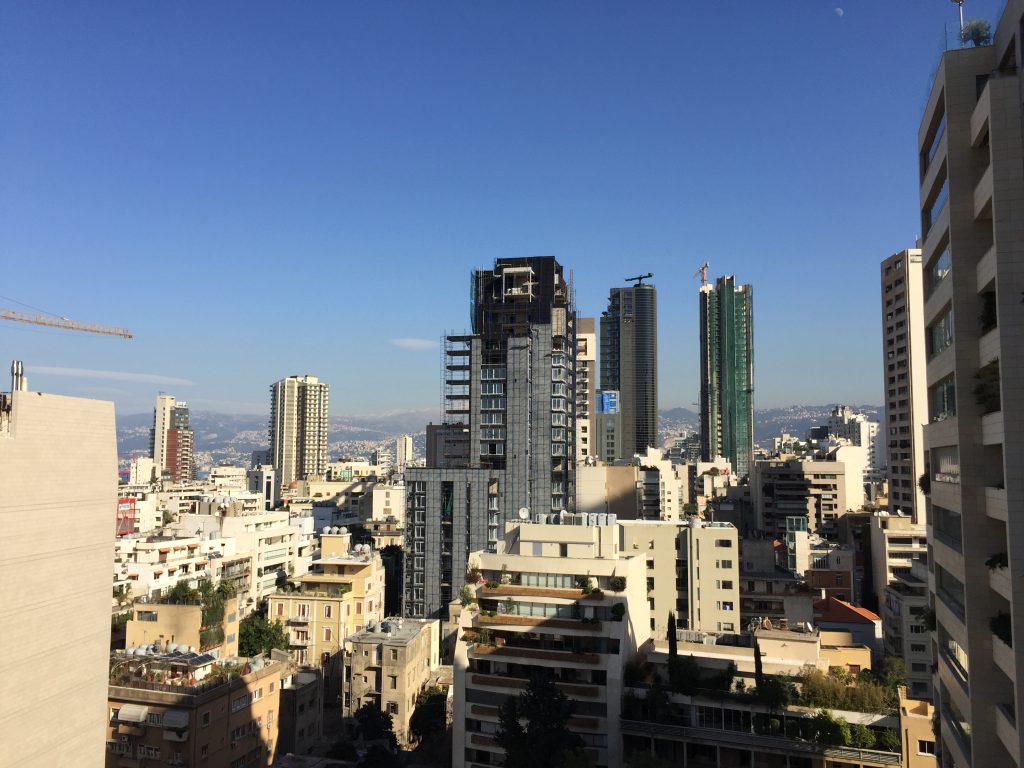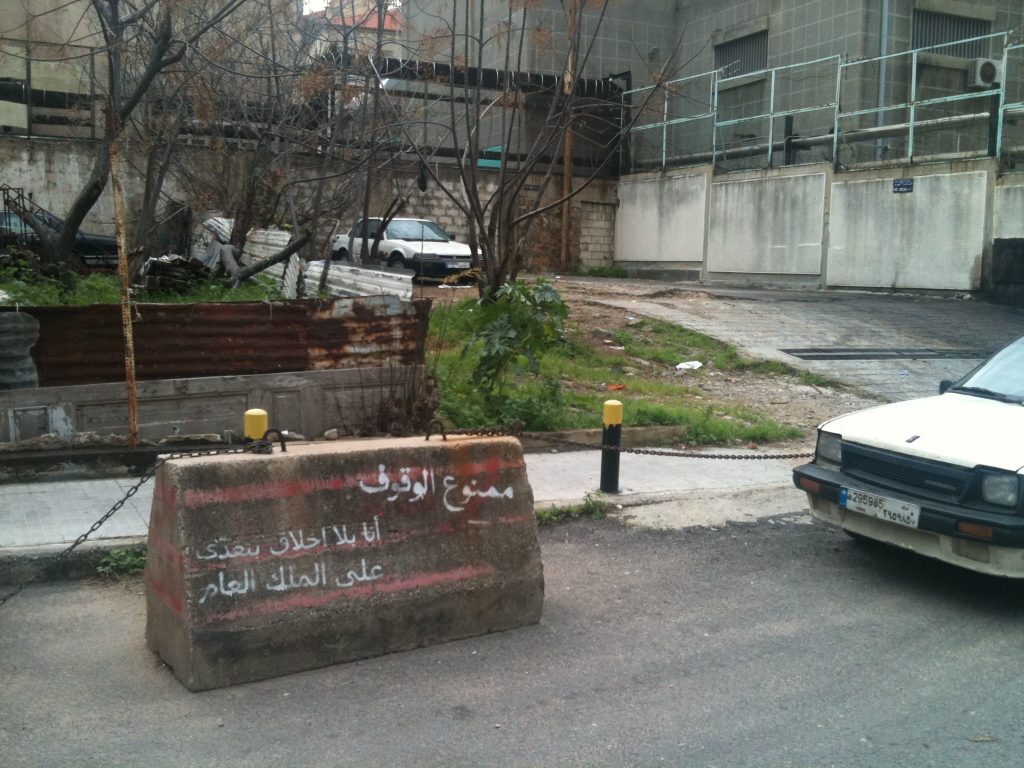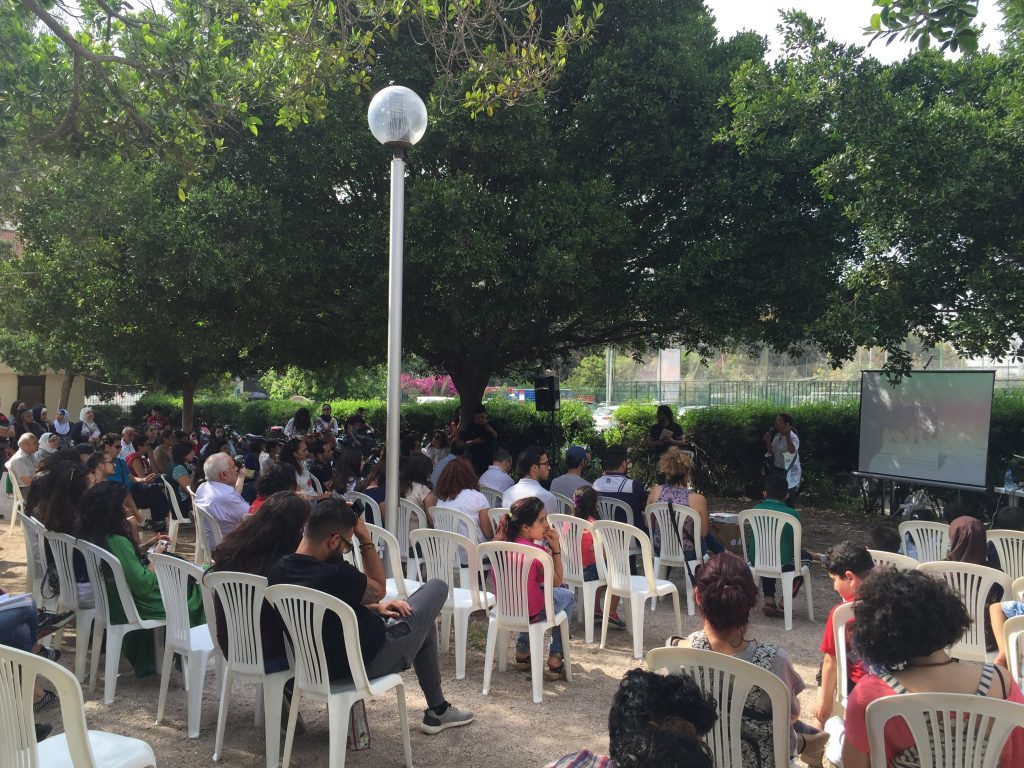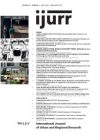The city at war has been explored from at least two complementary urban studies’ perspectives. First, the post-September 11th attacks and the major urban implications of the “war on terror” formed a major prism. Authors unpacked the spatial impacts of security and surveillance mechanisms on the built environment, investigating cities’ “military urbanism” (Graham 2012), “splintering urbanism” (Coaffee 2004), fortification and fragmentation (Coaffee 2005), as well as partitioning, “deplanning,” and loss of public space (Marcuse 2006). Second, the city at war has been examined as a target of defense strategies that range from technological projects, mapping, and surveillance mechanisms, to the radical flattening of urban neighborhoods (Coaffee 2005), where the need for obliterating terrorism and controlling access to territory trumps urban livelihoods (Graham, 2004). Urban studies on the city at war also very much privilege cities of the global North, while cities at war elsewhere are less explored, even though they are increasingly the target of the US and Europe’s defense strategies, as well as the testing grounds of many of the military and informational technologies implemented in policing and securing urban neighborhoods
With a few exceptions, which tend to celebrate people’s resilience in a normative fashion (e.g. Eisinger 2007), surprisingly few scholars have focused on people’s everyday responses to these urban processes. An emerging body of literature promises to address this oversight, however, opening a third perspective for exploring the city at war—one that privileges less how and why cities at war are produced and maintained, focusing instead on the ways different dwellers live, and experience cities at war, and the variations in people’s socio-spatial practices. Fawaz et al.’s (2012) work on the range of security mechanisms in Beirut is noteworthy in its exploration of the strategies deployed by various profiles of dwellers that navigate, and negotiate different security mechanisms in the city. Also taking Beirut as a case study, Bou Akar’s (forthcoming) book on planning for “the war-yet-to-come” opens up new avenues for understanding how political actors in cities at war mobilize urban planning instruments to consolidate their power, and contain perceived threats, revealing how the built environment becomes a strategic bargaining tool amidst complex sectarian power configurations. In addition, Nelida Fuccaro’s (2016) edited volume makes an essential contribution towards a relational and historical conceptualization of violence (rather than wars) and its transformative powers vis-à-vis urban space. Indeed, predominant approaches to studying cities at war generally privilege how state-sponsored wars materialize in cities, and tend to overlook how such wars resonate and materialize in urban neighborhoods and how they embody “cumulative practices of urban life” (Magnusson 2012, cited in Fuccaro 2016: 3). It is at this “microlevel of spaces of encounters with residents” that Fuccaro invites us to concentrate our research, shifting our “emphasis from the macrolevel of the institutional setting of the state” (Fuccaro 2016: 10). This microlevel of observation allows a better reading and unravelling of dwellers’ forms of activism, resistance, proximity, and place-making, and, thus, allows us to “[treat] violence as contingent on place and the rhythms of urban life [revealing] how the physical, material, and immaterial qualities of the city become enmeshed with various forms of state and social power” (Fuccaro 2016: 11).
Cities at War and The Everyday
I would like to underscore the importance of this third perspective through which cities at war can be examined. In doing so, I am motivated by my persistent urge to look for hopeful bits and pieces that persist in cities shattered by conflict and violence — shreds of enduring survival. These range from the children playing in the ruins of devastated Gaza, to the father watering his tiny garden of roses with his son in war-torn Aleppo, to the school teachers holding performance workshops for kids in underground basements in Raqqa, to Baghdadi dwellers still going to eat masguf in Karrada’s gardens, to my father who swiftly drove my brother and I across fire lines during the Lebanese civil war to reach our school on time. Nowadays, we have access to rich sources of information (blogs, e-zines, social media outlets…) documenting these multiple forms of everyday survival. However, critical urban studies are yet to analyze and theorize such experiences.
We know even less about socio-political modalities that may emerge contesting dominant power configurations in such contexts. In cities at war, ruling political elites are rarely concerned with protecting the public good and/or shared commons. They are preoccupied with remaining in power, and maximizing their returns, and those of their constituencies, by reaping as many resources as possible from a variety of sources. These could be grants and contracts from international donors and agencies providing humanitarian or development aid (Leenders 2012, 2016), or domestic resources generated from capital accumulation cycles associated with the war economy (Picard 1999), real-estate development (Bogaert 2012, Al-Achkar 2012), or oil rents (Muttit 2012: 319-324). Under those conditions, the city’s commons converts into rent opportunities to be grabbed as quickly as possible, especially during violent confrontations, producing acute socio-spatial inequalities and deteriorating living conditions.

A shot of Beirut’s real-estate development frenzy. Photo by M. Harb, 2015.
Beirut’s Urban Politics as “Cities’ at War” Urban Lab
Beirut, again, provides a good urban laboratory to examine these processes of the transformation of the urban commons. Starting with the coastline: during the civil war, militia leaders and their business partners seized most of Lebanon’s coastline, building ports and touristic resorts illegally, extracting sand, and renting or buying public land via shady deals. On to public space: instead of being rehabilitated, and opened up for people’s use after the end of the war, public gardens and parks were kept unmaintained, or closed-off, or used by public agencies for alternate ends. Additionally, using security as justifying narrative, authorities cordoned off additional public space, sealing off major streets and sidewalk sections, installing checkpoints, forcing drivers to take major detours, and worsening traffic conditions. On to real-estate development, which prioritizes private property rights at the expense of any urban planning considerations. And, on to public service provision: dwellers of Lebanese cities suffer on a daily basis, and in a degenerative pattern, from poor provision of public water and electricity services, defective waste management systems, failing public transportation structures, and deteriorating levels of pollution. They do resort to inventive alternative solutions, but at high costs, and with poor service quality. Meanwhile, ruling political elites and their business partners grow richer and more dominant, abusing the law to advance their interests, and maintain their power. Socio-economic and spatial inequalities grow deeper, and materialize in fragmented and segregated urban spaces. Scholars who coined urbanism as a splintering process already noted such processes and their dire spatial impacts, but we know very little about how residents respond to them.
Under such unjust living conditions and soaring disparities, voices claiming back dwellers’ rights to decent urban livelihoods and shared commons seem unlikely to arise. However, against all odds, urban activists have been organizing, and new forms of collective mobilization have been emerging to fight the usurpation of shared commons, and reclaim people-centered urban policies. Occasionally, those groups even manage to coalesce into a more enduring urban social movement, albeit short-lived.

Graffiti sign on a concrete block obstructing a street in Beirut.
The sign reads: “No parking. I have no morals. I encroach on public property.” Photo by M. Harb, 2015.
In Beirut, since the establishment of critical urban studies programs at Lebanese universities in the late 1990s, a new generation of reflective urban scholars and practitioners has been progressively consolidating (Harb 2016). These young architects and urbanists were taught about their rights to decent urban services, public transportation, open public space, cultural amenities, etc. They read the legal framework of urban planning, with its provisions that clearly protect people’s rights to the public realm. They were trained to value evidence-based research, and understand its usefulness to present an argued claim. Several became passionate about protecting and improving living conditions in their city’s neighborhoods and other places, where cultural heritage, ecological landscapes, and shared socio-spatial practices are still remarkable. Thus, when these places came under the threat of real-estate development, these young activists organized into loosely formed coalitions, and launched campaigns. One group mobilized to salvage the demolition of parts of the Mar Mikhail heritage neighborhood from the passage of the Fouad Boutros highway project conceived in the 1960s, which the Beirut municipality wanted to build. They surveyed the neighborhood, listing the number of houses and the green areas that were to disappear, and submitted a report to the Ministry of Environment, calling upon its legal prerogative to request an Environmental Impact Assessment (EIA) study. They succeeded in imposing the EIA, and its results revealed many of the project’s ill impacts. The project was halted. The group also proposed an alternative park to replace the highway, given the land had already been expropriated for public use. All their work is available on the campaign’s website.
Shortly after, another group mobilized to protect the coast of Dalieh Raouche from becoming a tourist resort: they did extensive research to document its archeological, historical, ecological, and social assets, resorting to their networks with university professors and experts, and their fieldwork skills. They created a website and published their findings. They organized an international ideas competition, which led to showcasing alternative solutions to real-estate development. They also managed to place Dalieh on the World Monuments Watch list.
Simultaneously, a sub-group, which was part of the Nahnoo NGO concerned with protecting public spaces in Beirut, started advocating the re-opening of the largest park in the city, Horch Beirut, closed-off by the municipality for fear of “abuse.” For two years, the campaign for Horch relentlessly hammered the mayor and the governor with their request, organizing a series of public debates and peaceful protests, mobilizing media outlets and other activists, and voicing their claims insistently, until the newly appointed governor chose to adopt their cause. Horch Beirut is now open to all city dwellers.

One of the neighborhood’s debates organized by Beirut Madinati in a public park.
Photo by M. Harb, 2016.
In summer 2015, a major garbage crisis took over the streets of Beirut. Because the ruling political elite could not agree on how to divide the spoils of the waste disposal contract, garbage stopped being collected. The issue remains unresolved to this day, but the garbage crisis mobilized activist groups in the city in unprecedented ways, leading up to the #YouStink movement. Groups organized and protested for several weeks, leading up to a defiant march in August that brought thousands of people to downtown Beirut, calling for the downfall of the sectarian regime, and attacking the entire ruling political elite loudly, using unprecedented slogans. The police intervened violently to control the protestors, arresting several of them. The movement terminated. In its aftermath, several activists came together and decided to participate in the forthcoming municipal elections. They organized and established Beirut Madinati (Beirut, My City) campaign. They assembled several networks: activists engaged in urban issues (such as the groups discussed above), others mobilizing for legal and institutional reforms, and still others who worked on elections and democracy building. Beirut Madinati authored a municipal program advocating an integrated and people-centered approach to local development policies. They organized public debates in neighborhoods. They established a strong social media presence. They arranged fundraising events, and a crowd-funding campaign. They formed a list of municipal candidates, equally divided among women and men, and unaffiliated to any political party — a first in the political history of the Arab world. They lost the elections in May 2016, but won 32% of the votes, a mere 11% difference with the winning list backed by Sunni leader and billionaire Saad Hariri. Were the election law in Lebanon proportional, Beirut Madinati would have placed nine of its candidates among the twenty-one municipal councilors.
These stories reveal that, within a city at war, there are still some opportunities for socio-political mobilization and new urban politics, in the Lefebvrian sense of appropriations of abstract space that may challenge oppressive structures of domination (Purcell 2002: 101-2). Such stories show how urban dwellers are still able to contest the overriding power relations that underlie the unequal production of urban space, by attempting to negotiate, challenge, and reclaim the urban policy process, albeit partially and in a punctuated fashion. The documentation of these stories is rather limited in urban studies that research the city at war, which too often prioritize the investigation of governmentalities and technologies of dominant political-economic institutional structures and practices, or highlight the resilience and agency of people, focusing much less on the meso-level of urban activism which may be leading to the formation of a new genre of urban politics. While such stories may not always generate desirable outcomes, and may end up “reinscrib[ing] new forms of domination” (Purcell 2002: 100), they are important to identify, research and understand, for scholars and activists who care about finding institutional and legal tools to challenge neoliberal urban structures, and advance people-centered inclusive urban spaces, in cities at war, and beyond.
Mona Harb is Professor of Urban Studies and Politics at the American University of Beirut. She works on urban activism, local governance, and political change.
All essays on The City at War: Reflections on Beirut, Brussels, and Beyond
The City at War
Rivke Jaffe
When the Pursuit of National Security Produces Urban Insecurity
Saskia Sassen
Diversifying Urban Studies’ Perspectives on the City at War
Mona Harb
A Balanced Response? The Quest for Proportionate Urban Security
Jon Coaffee
War, Crisis Cities, and Urban Research
Miriam Greenberg
Related IJURR articles on the City at War
Urban Security from Warfare to Welfare
Jennifer S. Light
Introduction: Symposium on Urban Terror
Harvey Molotch
Cities and the ‘War on Terror’
Stephen Graham
Security or Safety in Cities? The Threat of Terrorism after 9/11
Peter Marcuse
When Life Itself is War: On the Urbanization of Military and Security Doctrine
Stephen Graham
Guerrilla‐style Defensive Architecture in Detroit: A Self‐provisioned Security Strategy in a Neoliberal Space of Disinvestment
Kimberley Kinder
© 2017 THE AUTHOR. INTERNATIONAL JOURNAL OF URBAN AND REGIONAL RESEARCH, PUBLISHED BY JOHN WILEY & SONS LTD UNDER LICENSE BY URBAN RESEARCH PUBLICATIONS LIMITED
This is an open access article under the terms of the Creative Commons Attribution-NonCommercial-NoDerivs License, which permits use and distribution in any medium, provided the original work is properly cited, the use is non-commercial and no modifications or adaptations are made.
